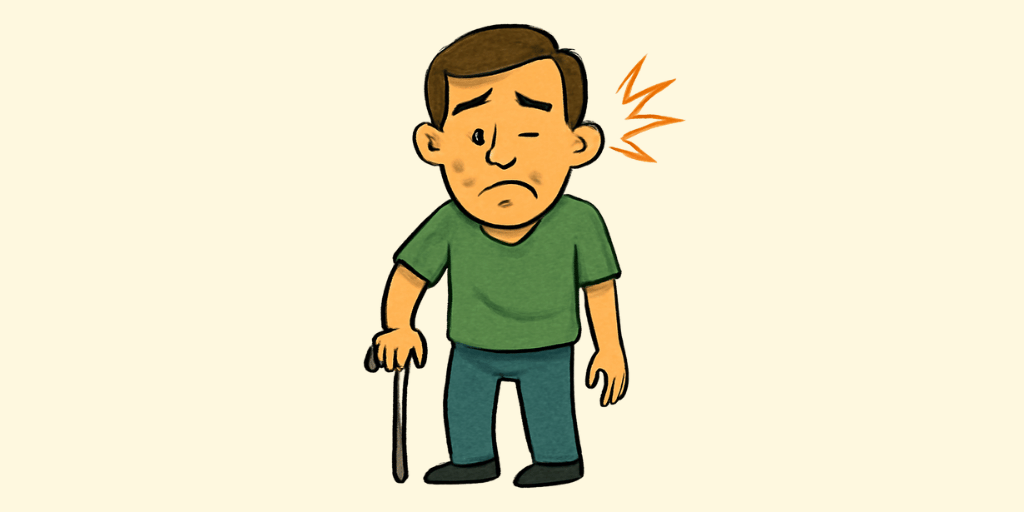Ayurvedic Name: Pakshaghat
Description:
Pakshaghata is a condition resembling hemiplegia or paralysis due to the obstruction of Vata, which leads to loss of function in one half of the body. It occurs when Vata becomes excessively dry and rough, affecting the nerves and muscles, often following a stroke or severe nervous exhaustion. Symptoms include weakness, loss of sensation, lack of coordination, and inability to move the affected side. Ayurvedic management emphasizes Snehana (oleation therapy), Swedana (fomentation), Basti (medicated enema), Shirodhara, and Rasayana herbs like Ashwagandha and Kapikacchu to rejuvenate the nervous system and restore mobility.
Signs & Symptoms:
- Ekangavata (Hemiplegia): Paralysis on one side of the body, affecting both the arm and leg on that side.
- Shwasa (Breathlessness): Difficulty breathing or speaking due to weakness in the facial and respiratory muscles.
- Dourbalya (Weakness): Severe weakness on one side of the body, making movement difficult.
- Gaurava (Heaviness in the Body): A feeling of heaviness or numbness in the affected limbs.
- Rukshata (Dryness): Dryness of the skin or mouth on the paralyzed side of the body.
- Vishama Agni (Irregular Digestion): Digestion issues related to the reduced physical activity in the affected side.
Diagnosis:
MRI Rain and Limb Strength Assessment
Risk Factors:
- Dietary Factors
High-fat Diets: Diets rich in saturated fats can contribute to cardiovascular diseases, increasing the risk of stroke, which may lead to hemiplegia.
Excessive Salt Intake: High salt intake can lead to high blood pressure, a risk factor for stroke and hemiplegia. - Lifestyle Factors
Sedentary Lifestyle: Lack of physical activity, obesity, and poor cardiovascular health increase the risk of stroke, which may result in hemiplegia.
Smoking and Alcohol Consumption: Smoking and excessive alcohol intake contribute to the development of stroke by increasing blood pressure and causing damage to blood vessels. - Medical Conditions
Stroke or Brain Injury: The most common cause of hemiplegia is a stroke, which can lead to paralysis on one side of the body.
Hypertension and Diabetes: Both conditions contribute to vascular problems and increase the likelihood of a stroke, leading to hemiplegia.
Complications:
- Permanent Disability (Aparipurnata): In severe cases, hemiplegia may result in permanent disability, affecting the ability to perform daily tasks.
- Muscle Atrophy (Mamsa Kshaya): Loss of movement in one side of the body can cause muscle wasting and weakness over time.
- Loss of Speech (Vakta Vikruti): Hemiplegia may affect the speech area of the brain, leading to speech difficulties such as aphasia.
- Severe Chronic Pain (Dukha): Nerve damage and immobility can lead to persistent pain and discomfort.
- Impaired Coordination (Samanvaya Kshaya): The brain’s motor functions may be affected, causing difficulty with coordination and balance.
Epidemeology:
More common in older adults, particularly over the age of 65, with stroke being the leading cause.
Occurs in 1.9% of the global population, with men being slightly more affected than women.
High incidence in individuals with a history of hypertension, cardiovascular diseases, and diabetes.
Stroke-related hemiplegia is a major contributor, with 17 million people affected by stroke globally each year, many developing hemiplegia as a consequence.

